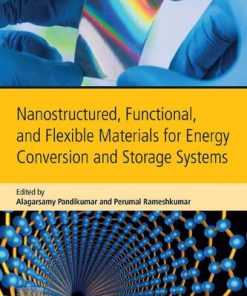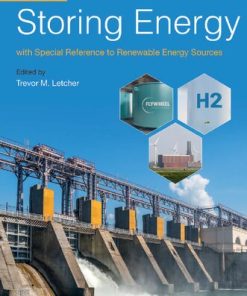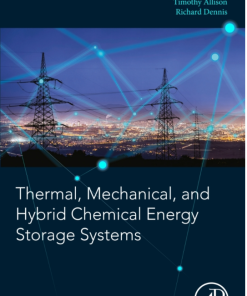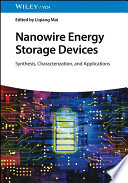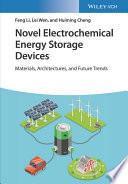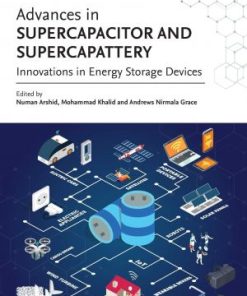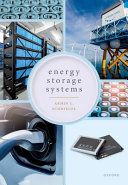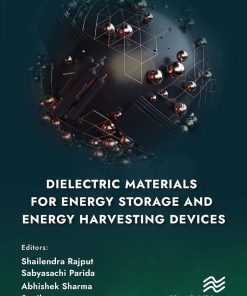(Ebook PDF) Energy Storage Devices for Renewable Energy Based Systems Rechargeable Batteries and Rechargeable Batteries 2nd Edition by Nihal Kularatna, Kosala Gunawardane 0128231858 9780128231852 full chapters
$50.00 Original price was: $50.00.$25.00Current price is: $25.00.
Energy Storage Devices for Renewable Energy-Based Systems: Rechargeable Batteries and Supercapacitors 2nd Edition by Nihal Kularatna, Kosala Gunawardane – Ebook PDF Instant Download/DeliveryISBN: 0128231858, 9780128231852
Full dowload Energy Storage Devices for Renewable Energy-Based Systems: Rechargeable Batteries and Supercapacitors 2nd Edition after payment.
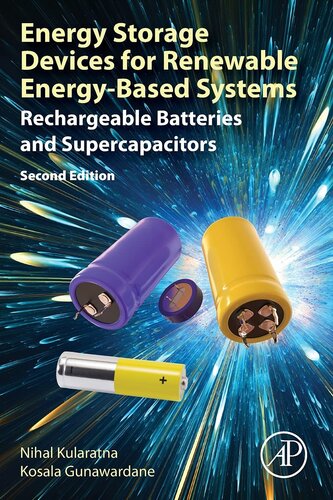
Product details:
ISBN-10 : 0128231858
ISBN-13 : 9780128231852
Author: Nihal Kularatna, Kosala Gunawardane
Energy Storage Devices for Renewable Energy-Based Systems: Rechargeable Batteries and Supercapacitors, Second Edition is a fully revised edition of this comprehensive overview of the concepts, principles and practical knowledge on energy storage devices. The book gives readers the opportunity to expand their knowledge of innovative supercapacitor applications, comparing them to other commonly used energy storage devices. With new application case studies and definitions, this resource will strengthen your understanding of energy storage from a practical, applications-based point-of-view without requiring detailed examination of underlying electrochemical equations. Users will learn about various design approaches and real-time applications of ESDs.
Energy Storage Devices for Renewable Energy-Based Systems: Rechargeable Batteries and Supercapacitors 2nd Table of contents:
1: Modern electrical power system and the role of distributed generation
Abstract
1.1: Evolution of electricity systems
1.2: Status of current power systems
1.3: Distributed generation
1.4: Renewable DG technologies
1.5: Energy storages technologies for distributed generation
1.6: Impact of distributed generation
1.7: Smart grid
1.8: DG penetration and evolving DC microgrids
2: Fundamentals of energy storage devices
Abstract
2.1: Introduction
2.2: Simple fundamentals
2.3: Energy storage in electrical systems
2.4: Compressed air energy storage
2.5: Superconductive magnetic energy storage
2.6: Rapid energy transfer requirements and fundamental circuit issues
2.7: Technical specifications of ESDs
2.8: Ragone plot
3: Rechargeable battery technologies: An electronic circuit designer’s viewpoint
Abstract
3.1: Introduction
3.2: Battery terminology and fundamentals
3.3: Battery technologies: An overview
3.4: Lead-acid batteries
3.5: Nickel-cadmium batteries
3.6: Nickel metal hydride batteries
3.7: Lithium-based rechargeable batteries
3.8: Reusable alkaline batteries
3.9: Zn-air batteries
3.10: Rechargeable batteries versus supercapacitors
4: Dynamics, models, and management of rechargeable batteries
Abstract
4.1: Introduction
4.2: Simplest concept of a battery
4.3: Battery dynamics
4.4: Electrochemical impedance spectroscopy for batteries
4.5: Battery equivalent circuit models and modeling techniques
4.6: Battery management in practical applications
4.7: Prognostics in battery health management
4.8: Fast charging of batteries
4.9: Battery communication and related standards
4.10: Battery safety
4.11: Future
5: Recent developments of high-performance battery systems
Abstract
5.1: Introduction
5.2: Flow batteries for renewable energy systems
5.3: Solid-state batteries
5.4: More recent advances of traditional rechargeable batteries
6: Capacitors as energy storage devices: Simple basics to current commercial families
Abstract
6.1: Capacitor fundamentals
6.2: Capacitor characteristics
6.3: Capacitor application scope
6.4: Capacitor types
6.5: Capacitor aging, lifetime, and reliability
7: Electrical double-layer capacitors
Abstract
7.1: Introduction
7.2: Historical background
7.3: Electrical double-layer effect and device construction
7.4: Pseudocapacitance and pseudocapacitors
7.5: Hybridization of electrochemical capacitors and rechargeable batteries
7.6: Modeling and equivalent circuits
7.7: Testing of devices and characterization
7.8: Modules and voltage balancing
8: New developments of larger supercapacitors: Symmetrical devices, hybrid types, and battery-capacitors
Abstract
8.1: Introduction
8.2: Supercapacitor modules
8.3: Recent advances in supercapacitor technologies and commercial devices
8.4: Comparison of discharge curves of different supercapacitor families
8.5: Future developments of larger supercapacitors
9: Supercapacitor assisted (SCA) techniques and the supercapacitor-assisted loss management (SCALoM) concept
Abstract
9.1: Introduction
9.2: Typical capacitor charging and discharging process
9.3: Generalized case of the RC circuit; with precharged capacitor connected to a DC source, which is higher than the rated DC voltage of the capacitor
9.4: Analysis of discharging efficiency
9.5: Supercapacitor as a lossless dropper
9.6: The first useful application: SC as a lossless dropper in SCALDO
9.7: Resistor-loss and capacitor energy capability in SCASA technique and issues of direct implementation
9.8: Basis of SCATMA technique
9.9: Renewable energy areas and SCALED basics
9.10: Potential future applications
9.11: Conclusion
10: Supercapacitor as a lossless dropper in DC-DC converters—SCALDO technique
Abstract
10.1: Introduction
10.2: DC-DC converters and DC power management
10.3: Supercapacitor-assisted low-dropout regulator (SCALDO) technique
10.4: Generalized SCALDO concept
10.5: Practical examples
10.6: SCALDO implementation examples
10.7: Wider applications of SCALDO technique
10.8: Comparison between SCALDO regulators and charge pumps
11: Extended applications of SCALDO technique
Abstract
11.1: Introduction
11.2: RS-SCALDO technique
11.3: DC-UPS SCALDO regulators
11.4: Dual-polarity (DO-SCALDO) concept
12: Supercapacitor-assisted LED lighting technique and its applications in DC microgrids
Abstract
12.1: Introduction to different lighting systems
12.2: DC operation of LED units: 12 V and higher voltage DC operable flood lighting units
12.3: Supercapacitors (SCs) for short-term DC-UPS capability to overcome solar energy fluctuations
12.4: Replacing battery banks with supercapacitors: Issue of MPPT implementation
12.5: SCALED topology and its theory related to higher-efficiency LED lighting
12.6: An overview of pilot project
13: Supercapacitors for surge absorption: Supercapacitor assisted surge absorber (SCASA) technique
Abstract
13.1: Introduction
13.2: Lightning and inductive energy dumps in electric circuits and typical surge absorber techniques
13.3: Supercapacitor as a surge absorption device: Summarized results of a preliminary investigation
13.4: Design approaches to a supercapacitor-based surge protector
13.5: Conclusion
14: Supercapacitors in a rapid heat transfer application
Abstract
14.1: Introduction
14.2: Problem of wasted water in day-to-day situations at home
14.3: Problem of traditional heating from direct AC mains supply and heating system specifications
14.4: Commercial solutions for eliminating water wastage due to storage in buried plumbing
14.5: Practical requirements for a localized solution
14.6: SC-based solution with prestored energy
14.7: Results from an ongoing prototype development exercise
14.8: Specific advantages of SC energy storage
14.9: Implementation challenges
14.10: Recent developments of commercial supercapacitor families and their impact on this technique
People also search for Energy Storage Devices for Renewable Energy-Based Systems: Rechargeable Batteries and Supercapacitors 2nd:
what is energy storage technology
energy storage companies
energy storage for renewable energy
energy storage for renewables
energy storage equipment
You may also like…
Technique - Electronics
Renewable Energy for Sustainable Growth Assessment 1st Edition
Uncategorized
Storing Energy: with Special Reference to Renewable Energy Sources 2nd Edition Trevor M. Letcher
Engineering - Industrial Engineering & Materials Science
Engineering - Energy & Power Resources
Technique - Energy: Renewable Energy
Energy Storage Systems: System Design and Storage Technologies 1st Edition
Engineering - Energy & Power Resources
Dielectric Materials for Energy Storage and Energy Harvesting Devices 1st Edition




